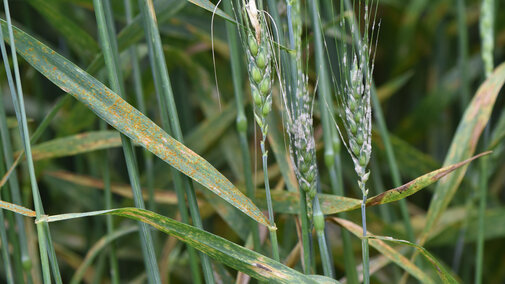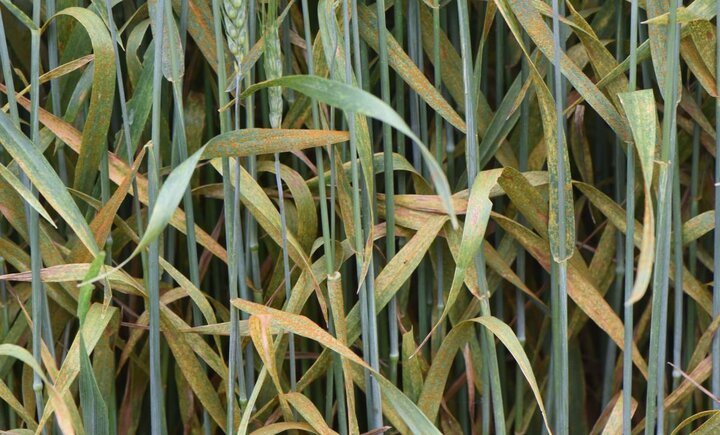
Surveys of wheat fields in southeast Nebraska during the week of June 3 revealed a significant increase in diseases from the previous week.
In plots at the University’s Havelock Research Farm near Lincoln on June 6, leaf rust, powdery mildew, and fungal leaf spots were present at moderate to severe levels (Figure 1). In some plots, leaf rust (Figure 2) had advanced to very severe levels and barley yellow dwarf (Figure 3) was present at a high incidence.
Fusarium head blight (Figure 4) was present at Havelock Research Farm on June 6 at a low incidence, but it is expected to increase in the coming days. On June 4, stripe rust (Figure 5) was found in a state variety trial and in a grower’s field in Washington County. On June 5, bacterial leaf streak (Figure 6), leaf rust, and stripe rust were in their initial stages of development in a state variety trial at the Eastern Nebraska Research and Extension Center near Mead.
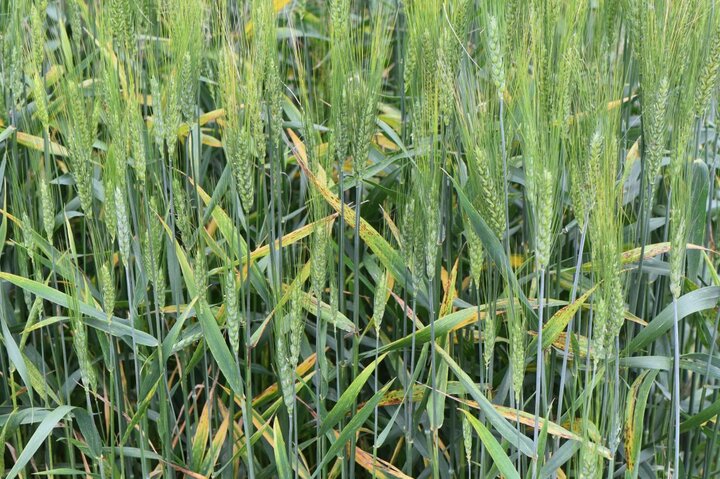
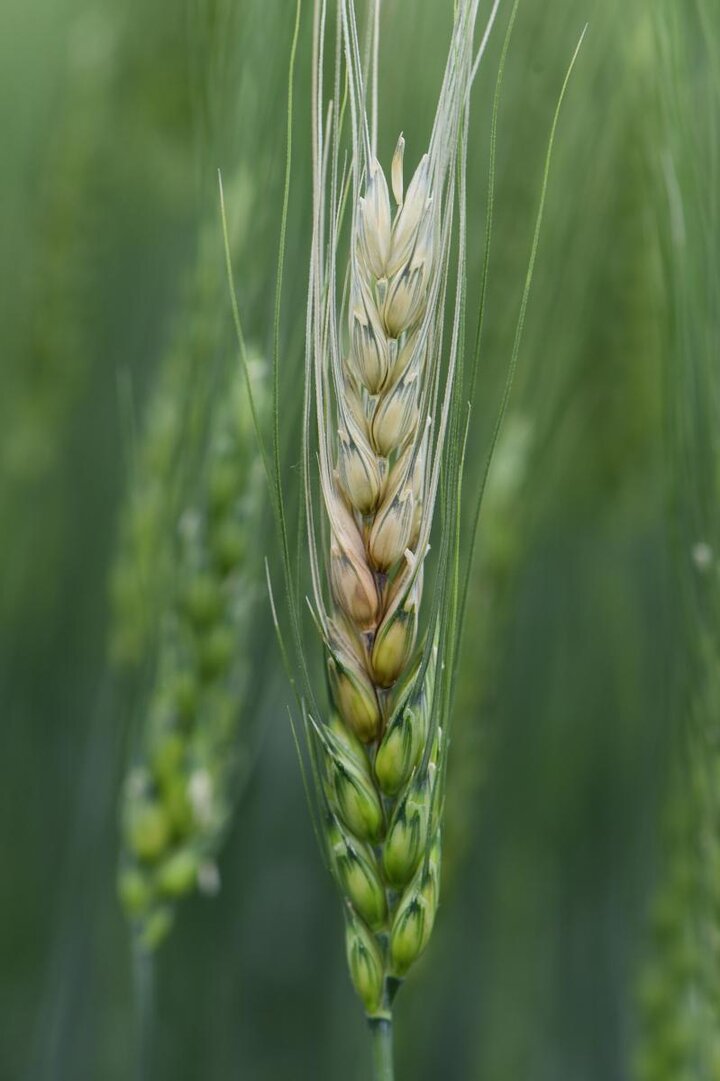
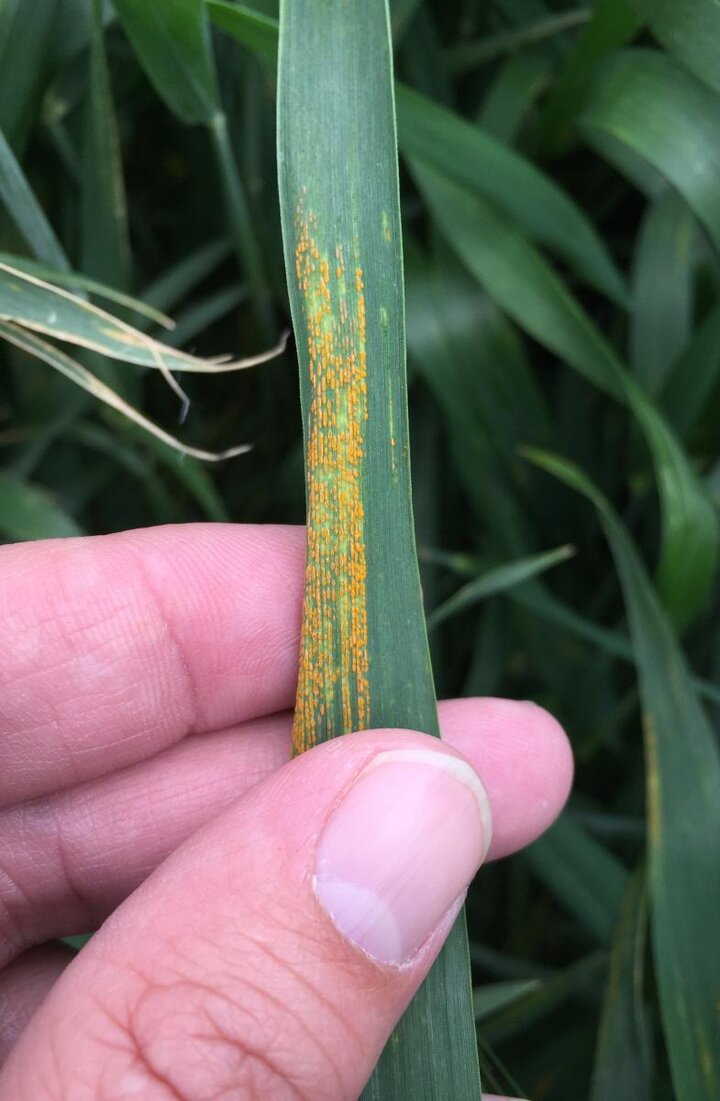

Management
For the fungal diseases (Fusarium head blight, the rusts, fungal leaf spots, and powdery mildew), a single spray with a fungicide containing a triazole as an active ingredient timed at flowering is recommended. Fungicides that are effective (good to excellent) on all of these diseases are Prosaro, Caramba, and Miravis Ace. Read and follow label instructions and restrictions before applying any fungicide. It is too late to apply a fungicide to fields that are past the flowering growth stage.
Barley yellow dwarf (a virus disease) and bacterial leaf streak cannot be controlled once they occur.
